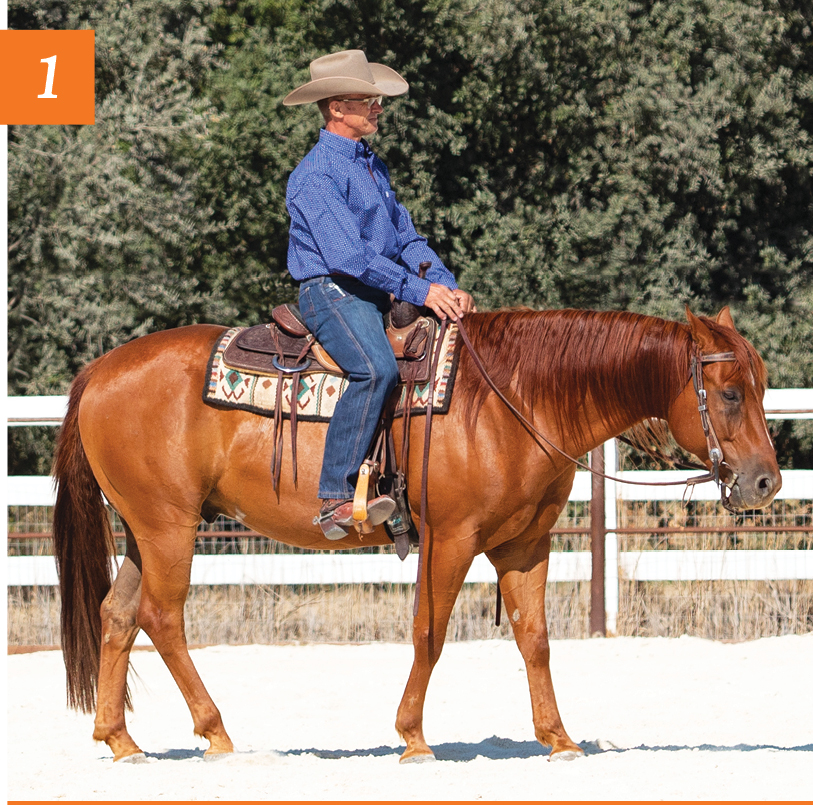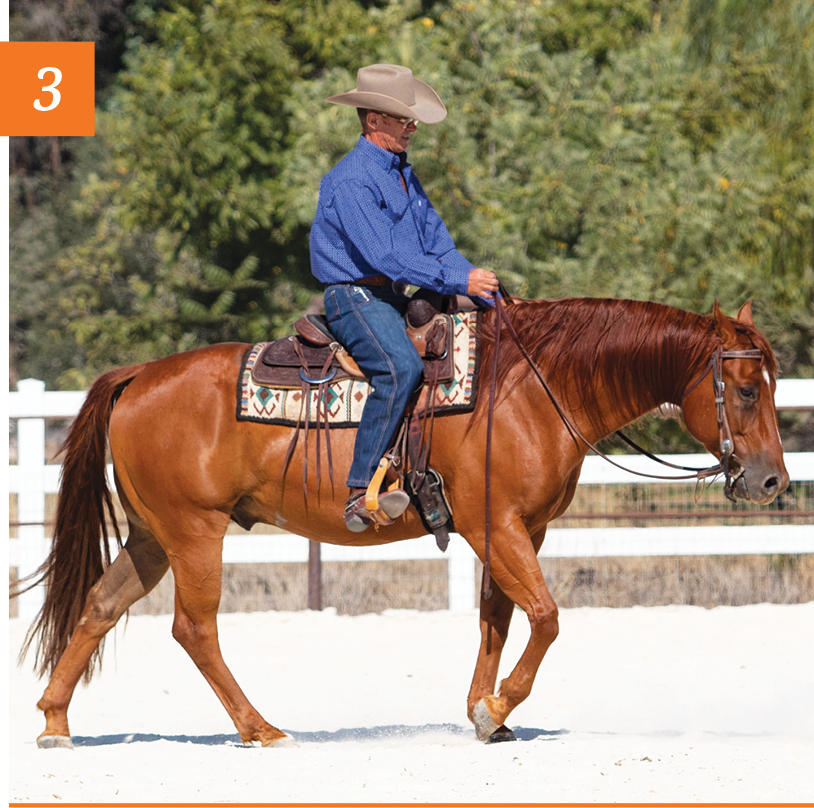“Self-carriage”—what is it? A horse with self-carriage moves with bundled energy, pushing off vigorously with his hind end. To do so, he must change the shape of his body, picking up his shoulders and shifting his weight back. His hind legs must reach well up underneath his belly in order to carry weight and provide forward impulsion.
[READ: OVERBRIDLED HORSE]
Why would a horse offer this kind of controlled energy? Not because you’re kicking him like crazy—your legs would wear out before you could achieve this result consistently. It’s because he’s been trained to be sensitive to your lightest leg cue. It’s as if he’s just waiting for your signal and is eager to respond.
I’m going to show you how to develop self-carriage to improve your horse in this way. You’ll urge him forward at the walk in a way that makes clear over time that what you want is energy, not speed. You can then use this same approach to promote your horse’s self-carriage at the other gaits, as well.
How It Works
You may be thinking, “But I don’t want my horse to go fast!” Let me be clear: I’m not talking about speed; I’m talking about controlled energy and readiness.
Think of a cutting horse, alert and ready to move whichever way the cow does. Or a tennis player, crouched and waiting for the serve, feet apart, perfectly balanced. Both are in a state of readiness to do whatever’s needed next.
That’s what you want from your horse—readiness to do what you ask of him, whether that be move ahead, turn, stop, whatever. To achieve this state in your horse, you need “not a stronger leg, but a stronger response to the leg”—the words of Philippe Karl, former head of the famous military riding academy École Nationale d’Équitation in western France.
Here’s another way to think of it: like peddling a bike. Before your horse has the readiness of self-carriage, getting and keeping him moving can be like peddling a bike uphill. Exhausting work! When he’s in self-carriage, by contrast, it’s more like coasting a bike on level ground—you only have to peddle lightly now and then because the impulsion is already there.
That’s your goal; now let’s see how to achieve it.
Step 1: No Self-Carriage

This photo shows a horse with zero self-carriage. You’ll recognize this state in your own horse by his lack of energy, the shortness of his stride, and the slack shape of his body. Note how my horse’s topline is flat, his muscles are relatively inactive, and his overall demeanor is sluggish.
Most of all, note how his hind leg fails to reach well up underneath his belly. He’s as much dragging himself along by his front end as he is propelling from behind.
He’s prepared to walk—slowly—but nothing more.
Step 2: Activation

The solution is to do whatever necessary with your legs, seat, hands, and voice to get your horse to push off. Again, what you want is more push, not more speed, but in the beginning it may mean you prompt him to gallop off. The key thing is to release all cues the instant you feel him seriously push forward with his hind end.
With repetition over time, your horse realizes, “Hey, the leg comes off when I change the shape of my body, no matter what speed I’m going at.”
In the photo, note how my horse’s forehand has come up, his hind end has lowered, and his muscles are activated. And get a look at that hind leg! That’s what I mean by push. My horse is almost ready to lope off; that’s the degree of readiness you’re after.
[READ: REFOCUS YOUR DISTRACTED HORSE]
Step 3: Self-Carriage!

And here’s the result. My horse is still walking, but compare this photo to the first one. Here, his shoulder is raised, his neck is arched, and his hind end is lowered for a lovely round topline. His muscles are working, and his hind legs are pushing hard and reaching well under. Compare that right hind leg in both photos… the difference is dramatic.
In this state of self-carriage, my horse is like that tennis player: poised, balanced, ready. He’s taking responsibility for himself, moving with energy on his own and prepared to respond to my next cue.
A true pleasure to ride!






